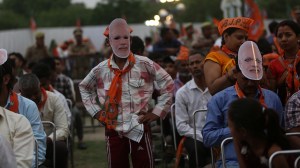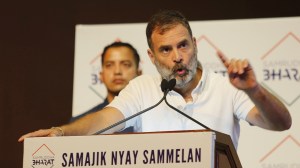- India
- International
Help microfinance,dont kill it
Eight prominent economists,including Raghuram Rajan,explain how restrictions on microfinance will be disastrous for the poor and lay out a roadmap for sensible regulation
The microfinance sector in India is in deep crisis. Last month the government of Andhra Pradesh (AP) promulgated an ordinance that retroactively waived loans where a sum of twice the principal had been repaid,required that repayment collections occur at panchayat offices,and added onerous regulation that requires registration of microfinance institutions or MFIs with district authorities who may,at any time,cancel it. Predictably,this has caused large-scale defaults by borrowers in AP,withdrawal of liquidity by banks and a severe loss in capital (SKS Microfinance,recently feted by the stockmarkets,has seen a 54 per cent drop in its share price in the last two months). Unless immediate action is taken by the Central government,the AP government,the RBI and the MFIs themselves,the viability of the entire industry could be threatened,not only in AP but throughout the country.
Microfinance fills a key need in developing countries like India: the provision of financial services to low-income clients who traditionally lack access to formal banking for several reasons. Those could include the absence of collateral or any evidence of ownership of assets; informal employment; unverifiable credit history; and high transaction costs per rupee loaned,due to the small loan size. Microfinance loans provide financial access to the poorest that allows many of them to start new businesses,grow existing businesses,insure against shocks due to bad weather and illness,and smooth consumption. In the absence of microfinance,the poor will have no choice but to approach the unregulated local moneylenders who provide services that are fast and flexible,but charge usurious interest rates in the range of 60-120 per cent per year and who may often enforce repayment by illegal and exploitative means.
In contrast,although delivering credit to the poor through any means is an expensive endeavour resulting in above-average interest rates,some of the biggest MFIs in India recently announced an interest rate cap of 24 per cent. We estimate that the break-even interest rate for MFIs in India ranges between 20-38 per cent,depending on the size and age of the MFI. Costs are primarily driven by the expense of giving small loans to the poor caused by the difficulty in identifying customers in rural areas and urban slums,appraising them to select the creditworthy,disbursing money,collecting repayments and the cost of raising funds.
Ironically,some of the largest Indian MFIs charge rates substantially lower than MFI rates in many parts of the world: for instance,in Mexico and the Philippines,rates are often above 60 per cent per annum. The MFI contract,however,is fragile. If borrowers are encouraged to default en masse,the system will fall apart and a valuable financial product may become unviable. It is very likely that this is happening in AP,with the current high default rates not reflecting that the average borrower was in distress but rather the effect of recent actions encouraging borrowers to default wilfully.
Microfinance is not without its problems,mostly relating to its rapid recent growth,especially in Andhra Pradesh. In 2007,there were about 8 million borrowers and around Rs 40 billion in microcredit in the country. Today there are over 25 million borrowers and around Rs 225 billion. This expansion has been accompanied by anecdotal evidence of over-indebtedness of clients due to careless lending practices,largely rooted in the inability of MFIs to verify clients amount of outstanding debt with other institutions. There have been rumours of debt-related suicide,though no systematic investigation into the claims.

While these reports of heavy debt burden on the poor are distressing,it is important to keep in mind that rural indebtedness is not the result primarily of MFI activity in fact,the majority of debt among households in poor areas is non-MFI loans. A recent survey by the Centre for Microfinance has revealed that a staggering 93 per cent of the households in AP have a loan outstanding. Of these the vast majority,82 per cent,were from informal sources (57 per cent borrowed from friends with interest,17 per cent from a moneylender),and only 11 per cent had a loan from an MFI. Moreover,multiple borrowing from the same source is most prominent among those who borrowed from informal sources: only 30 per cent of active MFI borrowers had more than one loan outstanding,compared to 85 per cent of rural households who were active borrowers from informal sources
As microfinance expands,there will undoubtedly be frictions between MFIs and clients, government schemes,and politicians. Some will be genuine,others motivated by a desire to get loans waived,and yet others from attempts to increase influence or protect the interests of existing moneylenders whose business may be threatened. Unless there are some clear,universal regulations binding MFIs,there will be continued attempts by local political entrepreneurs to intensify these frictions for political gain. Yet over-regulation of the industry will certainly destroy it,by increasing the costs of lending to unsustainable rates forcing us to depend once again on public sector efforts for financial inclusion that have largely been unsuccessful.
Given this obvious tradeoff,regulation should be less focused on fixing interest rates or limiting profits,and more focused on institutional reform that makes it easier for MFIs to screen borrowers and thereby lower the cost of their products,as well as encouraging MFIs that charge reasonable rates. The following could be immediate starting points for reform:
1. The AP government should withdraw,or at least suspend,its ordinance until a more comprehensive way of achieving its legitimate aims is worked out.
2. A consumer grievance redressal process should be created as part of a larger structure for consumer protection,as suggested by the Committee for Financial Sector Reforms (myriad agencies for grievances will increase confusion and costs).
3. While regulation that sets strict interest rate ceilings should be avoided,regulation should reward MFIs that charge reasonable interest rates as well as those that introduce innovative products that provide flexibility in repayment. For instance,built-in insurance that protects the borrower during times of distress.
4. The establishment of a well-functioning credit bureau to which all MFIs are required to report their entire portfolio of lending is key to preventing over-indebtedness. The introduction of Unique IDs greatly facilitates the establishment of such a bureau,which would benefit the industry as a whole.
5.MFIs recently created a Microfinance Institutions Network (MFIN) that adopted a code of conduct that focuses on fair practices with borrowers. The industry should accelerate MFIN implementation as well as the credit bureau. The RBI should examine,approve and monitor the implementation of this code of conduct,which could form the basis of future regulation.
When it works well,microfinance can be a win-win situation,as the poor can borrow money at rates that may look high,but are much lower than those offered by moneylenders; and banks can make a sustainable business in lending to the poor. All this rests as much on a social contract as on a legal contract. MFIs need to be more diligent in their lending and screen borrowers better if too many borrowers cant repay their loans,the social obligation will start to fall apart.
But politicians also need to be wary in taking aim at the occasional overstep,they may find themselves inadvertently destroying the whole business,at great cost both to the poor,and the financial institutions that have stepped in to work with them. If we are not careful we may end up in the pre-microfinance world. That would be a great disservice to the poor,and their hope of climbing out of poverty.
The writers are: Abhijit Banerjee (MIT),Pranab Bardhan (Berkeley),Esther Duflo (MIT),Erica Field (Harvard),Dean Karlan (Yale),Asim Khwaja (Harvard),Dilip Mookherjee (Boston),Rohini Pande (Harvard),Raghuram Rajan (Chicago)
EXPRESS OPINION
Apr 25: Latest News
- 01
- 02
- 03
- 04
- 05










































